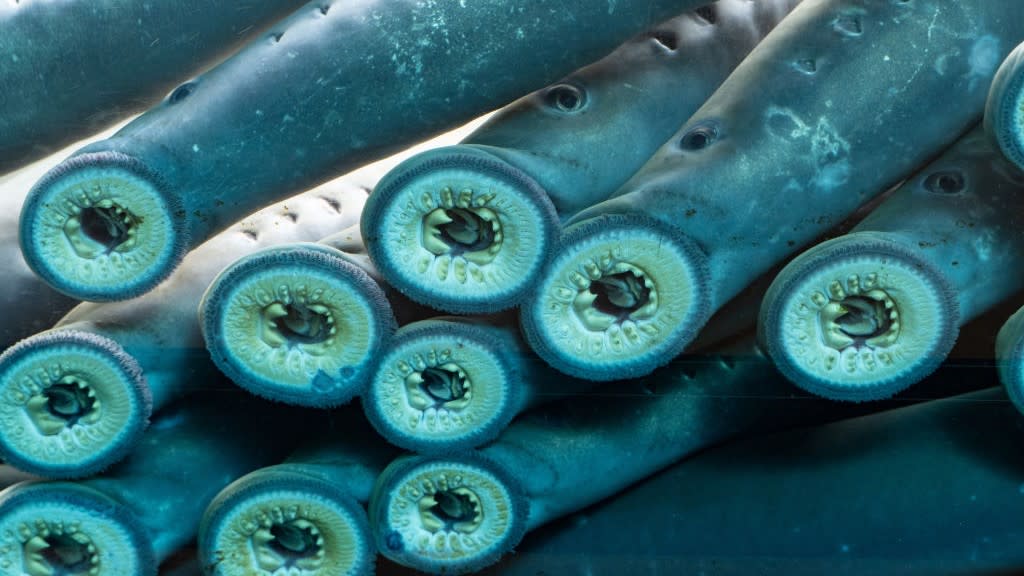Pacific lamprey: The jawless fish that survived 4 mass extinctions and sucks prey dry of blood and body fluids


Name: Pacific lamprey (Entosphenus tridentatus)
Where it lives: Freshwater and marine ecosystems in the North Pacific, from California to Alaska, and across the Bering Sea to Russia and Japan
What it eats: The blood and body fluids of other fish, including Pacific salmon, flatfish, rockfish and Pacific hake
Why it's awesome: Lampreys belong to a group of ancient, jawless fish that evolved over 450 million years ago during the Ordovician period (485 million to 444 million years ago). There are roughly 40 living species of lampreys dotted across the world. These eel-like creatures were darting up and down streams long before dinosaurs and even trees existed, and have survived at least four mass extinctions.
Related: Barreleye fish: The deep-sea weirdo with rotating eyes and a see-through head
Pacific lampreys are boneless fish, and their skeletons are made entirely of cartilage. Instead of a jaw, they have a sucker mouth rimmed with teeth, which they use to latch onto prey and extract blood and body fluids. As far as scientists can tell, lampreys do not eat flesh.
RELATED STORIES
—West Indian Ocean coelacanth: The once-'extinct' Lazarus fish that can live for 100 years
—100-million-year-old hagfish complete with slime kit discovered
Females lay up to 200,000 eggs in nests that they incubate in fresh water for three to four weeks. Once the larvae hatch, they burrow into the sediment and remain buried for up to a decade. They emerge as juveniles and migrate downstream to the ocean to feed, only returning to freshwater habitats several years later to reproduce. Adults, which grow up to 33 inches (84 centimeters) long, can travel hundreds of miles inland in search of the perfect spawning and rearing spot.
Pacific lampreys are very desirable prey for many species of birds, mammals and fish due to their extremely fatty flesh, which contains three to five times as many calories by weight as salmon. As such, they play an important role in freshwater and marine ecosystems.

